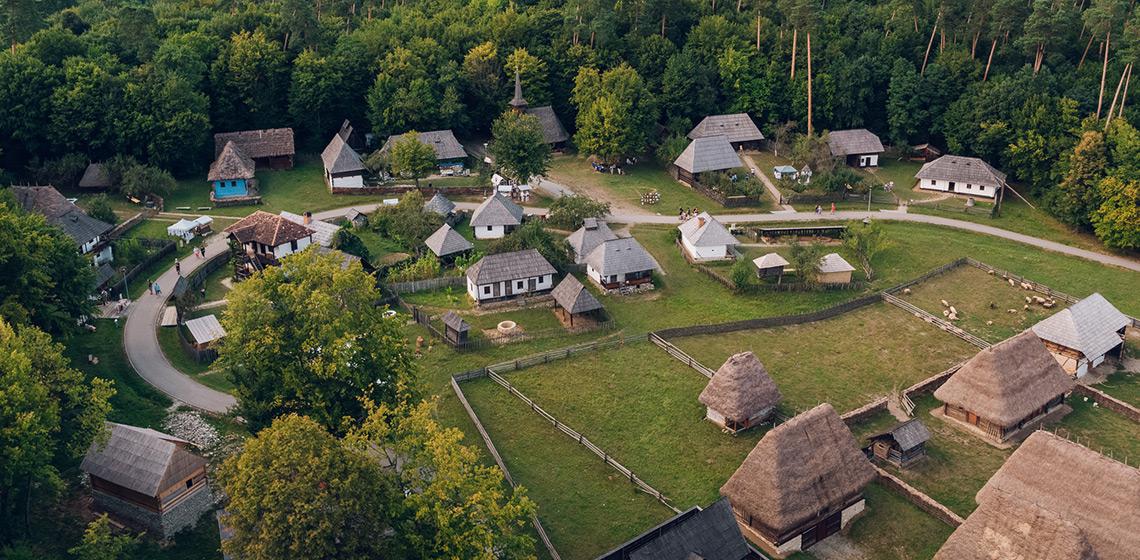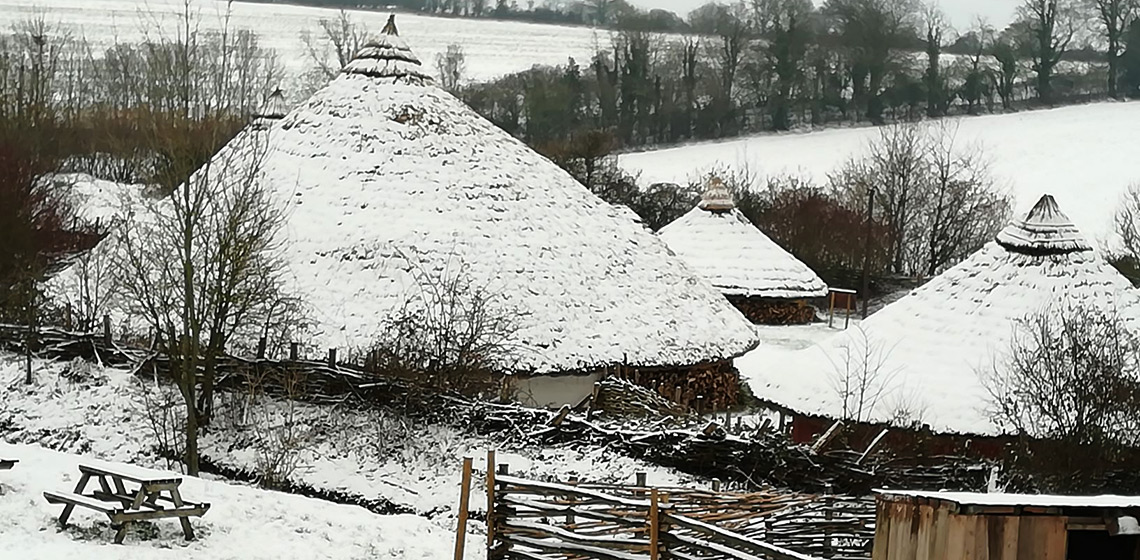Archaeological Open-Air Museum
Approaches to the Documentation of Houses in Open-Air Museums
Complexul National Muzeal ASTRA (RO)
The ASTRA Open-Air Museum situated in the natural reservation of Dumbrava Sibiului, 4 kilometers away from the Sibiu city centre, spreads across 96 ha, of which more than 40 ha are covered by the permanent exhibition. It was opened in 1963 when the assumed mission was to present the traditional technical patrimony in rural Romania, mills for grinding, oil, grapes and fruit presses, sawmills and watermills, and some peasant industries.
After the 90's, the museum goes through an obvious transformation, the aspect of traditional culture being more present through the houses rebuilt in the museum, but also with emphasis on the immaterial patrimony. ASTRA Open-Air Museum currently holds over 400 monuments of folk architecture and technique, as well as an impressive collection of ethnographic heritage objects. Conceived as a living museum, it hosts many traditional events such as: traditional fairs, workshops, folk festivals and performances.
Open-Air Museum de Locht (NL)
The open-air museum “de Locht” is an agricultural open-air museum, focusing on the life of farmers on the North-Limburg sandy soils. This includes the growing of asparagus and mushrooms. They collect, archive and present, also in person, about older ways of life, traditions, crafts and folk culture, looking back at the past, but also with a view on the future of North Limburg.
Archaeological research in 2009 led to the discovery of a farm on the grounds of the open-air museum, dating to about 1320 AD. It was decided to reconstruct this farm on site by placing new posts in the exact old postholes. Volunteers then constructed a fully furnished farm.
StaPark (RS)
The Neolithic archaeological open-air museum StaPark has been built in the village of Stapary and very vicinity of the archaeological localities Velika Gradina and Mala Gradina where the Neolithic man’s natural environment has been recognized and mainly researched.
A settlement of 1.500 square meters, consisting of four wattle and daub houses and one half pit-house, is built and furnished in accordance with lifestyle of Neolithic man. Exhibitions dedicated to the clothes producing, leather processing, tools crafting, processing the ceramics and weapons and preparing food of a Neolithic man are the museum’s permanent exhibition.
Questions from the Ancient Technology Centre
EXARC's member the Ancient Technology Centre (ATC) needs help to decide how to improve.
Dorset Council is developing a grant application for improvements at the Ancient Technology Centre to enhance the experience, increase our activities and make it accessible to more visitors. The ATC envisages having more parking, a new visitor centre and improved facilities, including updating our reconstructed 'ancient' buildings.
The Story of your Site: Archaeological Site Museums and Archaeological Open-Air Museums
La Hougue Bie Museum (UK)
With a name that’s derived from the Old Norse of the Vikings – haugr meaning a mound and byr - that’s bound up with a medieval legend of a dragon and a knight, it’s no surprise that La Hougue Bie is a magical and surprising place creating a truly memorable experience, home to one of the ten oldest buildings in the world.
The Legend
According to a folk tale, the mound of La Hougue Bie takes its name from the Lordship of Hambye in nearby Normandy. While the legend tells the story of a dragon and the knight who killed it, others interpret it as a tale of the Christianisation of the old pagan site, with the dragon representing the old beliefs and the knight the new religion of Christianity.
Documentation Strategies at Butser Ancient Farm
Wanted: Volunteers for online Roundhouse Project
Anyone looking for something to do while we are all at home?? Look no further...
Kate, a student from the University of Exeter, looking for volunteers to participate in her online archaeology activity for her dissertation! It involves two online surveys and a PowerPoint roundhouse activity, all of which should take about an hour. Your answers are anonymous.
Please message roundhouse@exarc.net if you are interested. Kate would love as many volunteers as possible to try to get some good data! And please feel free to share with others who may be willing to be involved!







